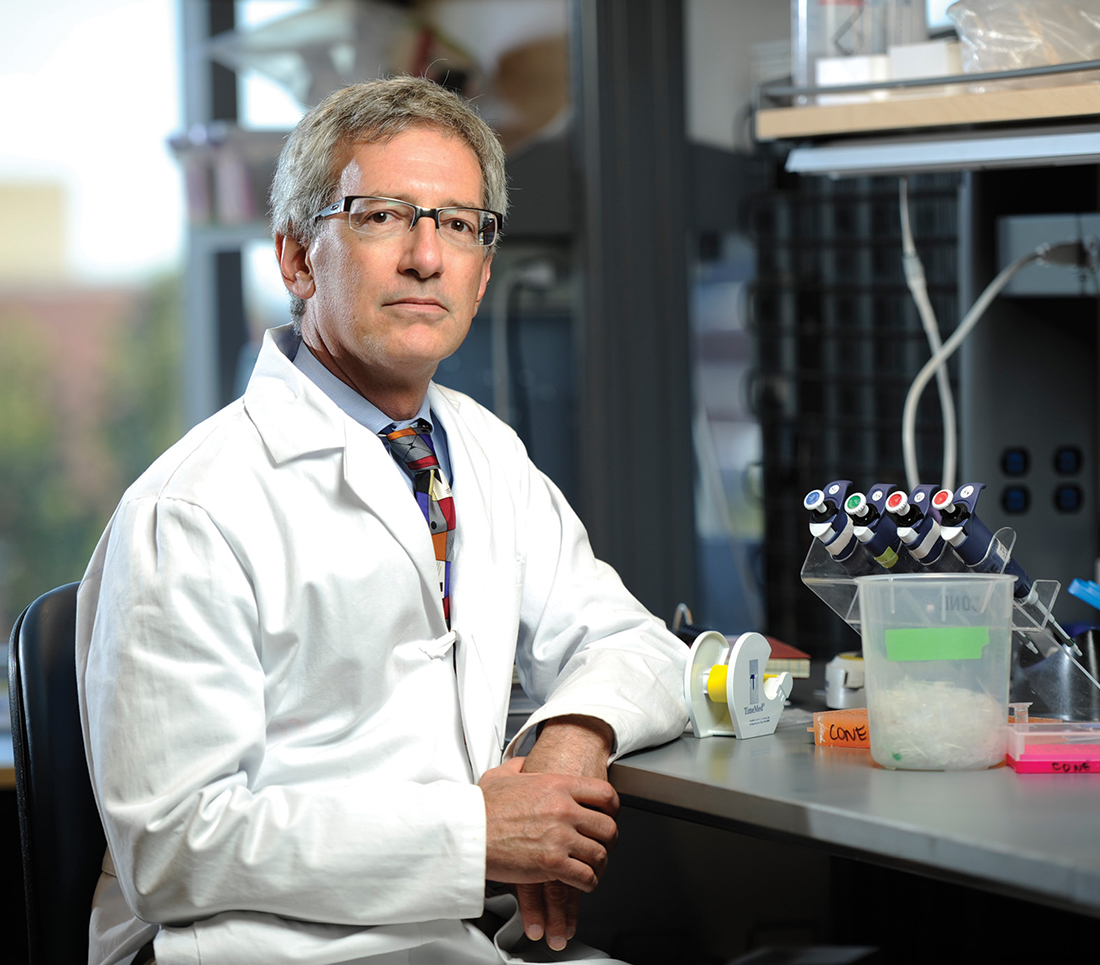Compounds Offer New Options for Diabetes Treatment
One of the hottest areas of drug discovery involves the search for new treatments for diabetes, obesity and other metabolic disorders. Last year Vanderbilt signed a collaboration agreement with pharmaceutical giant GlaxoSmithKline (GSK) for the discovery, development and commercialization of novel therapies for severe obesity that target the melanocortin-4 receptor (MC4-R).
Discovered in the late 1990s by Roger Cone and colleagues, the receptor is involved in energy homeostasis—the balance of food intake and energy expenditure—and in the regulation of body weight. Defective melanocortin signaling is the most common cause of severe, early onset obesity.
With major support from the National Institutes of Health (NIH), the Cone group identified a series of drug-like compounds—called positive allosteric modulators, or PAMs—that “gently increase” MC4-R activity.

Under the agreement, the Vanderbilt researchers are conducting the pharmacology and preclinical testing, and GSK scientists will try to develop chemically similar compounds with improved activity and efficacy. The goal is to begin phase-1 testing in humans in 2016.
“We hit two technical roadblocks along the way, and by working together … we were able to overcome both of them,” says Cone, the Joe C. Davis Professor of Biomedical Science and chair of the Department of Molecular Physiology and Biophysics.
The GSK contract emerged from a year of negotiations with the Vanderbilt Center for Technology Transfer and Commercialization and the Office of Contracts Management. “That type of contract had never been negotiated by either side before,” he says.
It was the second agreement GSK had signed with a U.S. academic institution under its Discovery Partnerships with Academia (DPAc) program, which unites academia’s expertise in “deep biology” with pharma’s drug-discovery acumen. Vanderbilt was the first of the company’s 10 DPAc affiliates worldwide to reach the “chemical tractability milestone,” meaning that the compounds have been shown to have drug-like physical and chemical properties.
MC4-R also is involved in cachexia—lack of appetite, a potentially life-threatening complication of illnesses ranging from cancer and heart disease to kidney damage. In animal models, “blocking the MC4-R is one of the most potent ways known to stimulate food intake,” Cone says.
In a prior collaboration with the Eli Lilly Co., the Cone group searched for “negative allosteric modulators” that can turn down receptor activity without causing side effects.
Cone says both of his drug-discovery projects owe much to Vanderbilt’s High-Throughput Screening (HTS) facility, which helped his lab rapidly identify “hit” compounds that act on the receptor.
Other Vanderbilt researchers involved in metabolic drug discovery include Dr. Kevin Niswender, PhD’96, MD’98; David Jacobson and Jerod Denton.
Niswender and colleagues Craig Lindsley, Scott Daniels and David Weaver, scientific director of the HTS facility, used HTS to identify allosteric modulators that “rev up” the activity of the GLP-1 receptor. GLP-1 is a hormone that helps control glucose levels while reducing appetite. They are now further characterizing and optimizing these compounds with the hope of discovering new diabetes drugs that help patients maintain or lose weight with minimal side effects.
With support from the NIH, Jacobson and Weaver are looking for modulators of two-pore-domain potassium (K2P) channels in pancreatic islet-cells that could lead to pharmacological strategies for treating conditions characterized by dysglycemia. Using a high-throughput, thallium-based assay, they have uncovered bioactive lipid regulators of K2P channels, and a large-scale HTS on these channels is currently underway.
Denton and his colleagues recently used a high-throughput screen to discover a novel and specific activator of potassium-channel complexes that are important drug targets for metabolic disorders of glucose homeostasis. Their NIH-supported studies could lead to a new way to treat intractable hypoglycemia caused by excessive insulin secretion with minimal side effects.